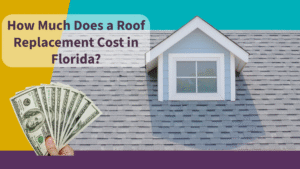
5 Roof Maintenance Tips
5 Essential Roof Maintenance Tips Every Florida Homeowner Should Know Your roof is your home’s first line of defense, especially in Florida, where the climate

5 Essential Roof Maintenance Tips Every Florida Homeowner Should Know Your roof is your home’s first line of defense, especially in Florida, where the climate

Roof Replacement 101: Architectural Shingles vs. Metal Roofing: Which Is the Best Choice for Your Roof Replacement? When it’s time for a roof replacement, one

Out of All Shingle Brands, This Is the Best Shingle for You When it comes to protecting your home, your roof isn’t the place to

Roof Replacement 101 Step by Step Guide to a Shingle Roof Installation in Florida When it’s time for a roof replacement, knowing what actually happens

Halloween Boo-Lock Party 2025 We had such a great time at the Boo-Lock Party on October 25th in Orange City. We wanted to thank City of Orange

Roof Replacement 101: Understanding Roof Underlayments, Peel & Stick vs. Synthetic When it comes to a roof replacement, most homeowners think first about shingles, tiles,

The Hidden Warranty Mistake That Could Cost You Thousands: Mixing Roofing Brands Most homeowners think that once their new roof is replaced, they’re protected for

What is the Cheapest Roofing Option? Before you spend thousands on a new roof, it’s worth asking: what’s the most affordable roofing option that actually

Roof Maintenance Tips Every Florida Homeowner Should Know | Extend the Life of Your Roof Before Costly Roof Repair or Roof Replacement Your roof protects

How Roof Damage Happens, and Know When a Roof Replacement is Needed. Your roof is your home’s first line of defense. Day after day, it

Everything You Need to Know Before Replacing Your Roof Thinking about replacing your roof? Whether you’re dealing with leaks, storm damage, or just an aging

Cut Your Energy Bills with Proper Roof Ventilation If you’re looking for ways to save money on energy bills and make your home more comfortable

How Much Does a Roof Replacement Cost in Florida? Replacing your roof is a major investment, and understanding the costs in Florida can help you

5 Common Roofing Scams in Florida and How to Avoid Them Florida homeowners face unique challenges when it comes to roofing, from hurricanes to intense

How Long Should a Roof Last in Central Florida? How Long Should a Roof Really Last in Central Florida? Living in Central Florida means sunshine,

Best Roofing Materials for High Wind Areas in Central Florida Why Choosing the Right Toofing Material Matters Living in Central Florida means preparing for hurricane

What to Do When Your Roof Starts Leaking in a Storm: A Florida Homeowner’s Guide Your roof just started leaking, and it’s pouring outside.First, take

Safety at Your Home! Pinnacle Roofing Group Takes OSHA Level Precautions When it comes to roofing, safety isn’t just a box to check, it’s a

Inside the Pinnacle Roofing Process: A Clear, Customer Centered Approach Initial Contact & Scheduling Your journey begins the moment you reach out, whether by phone,

Unlocking the Truth Behind Your Roofing Estimate Understanding the Estimate Structure Material Costs vs. Labor: The estimate often appears as a single lump sum, but